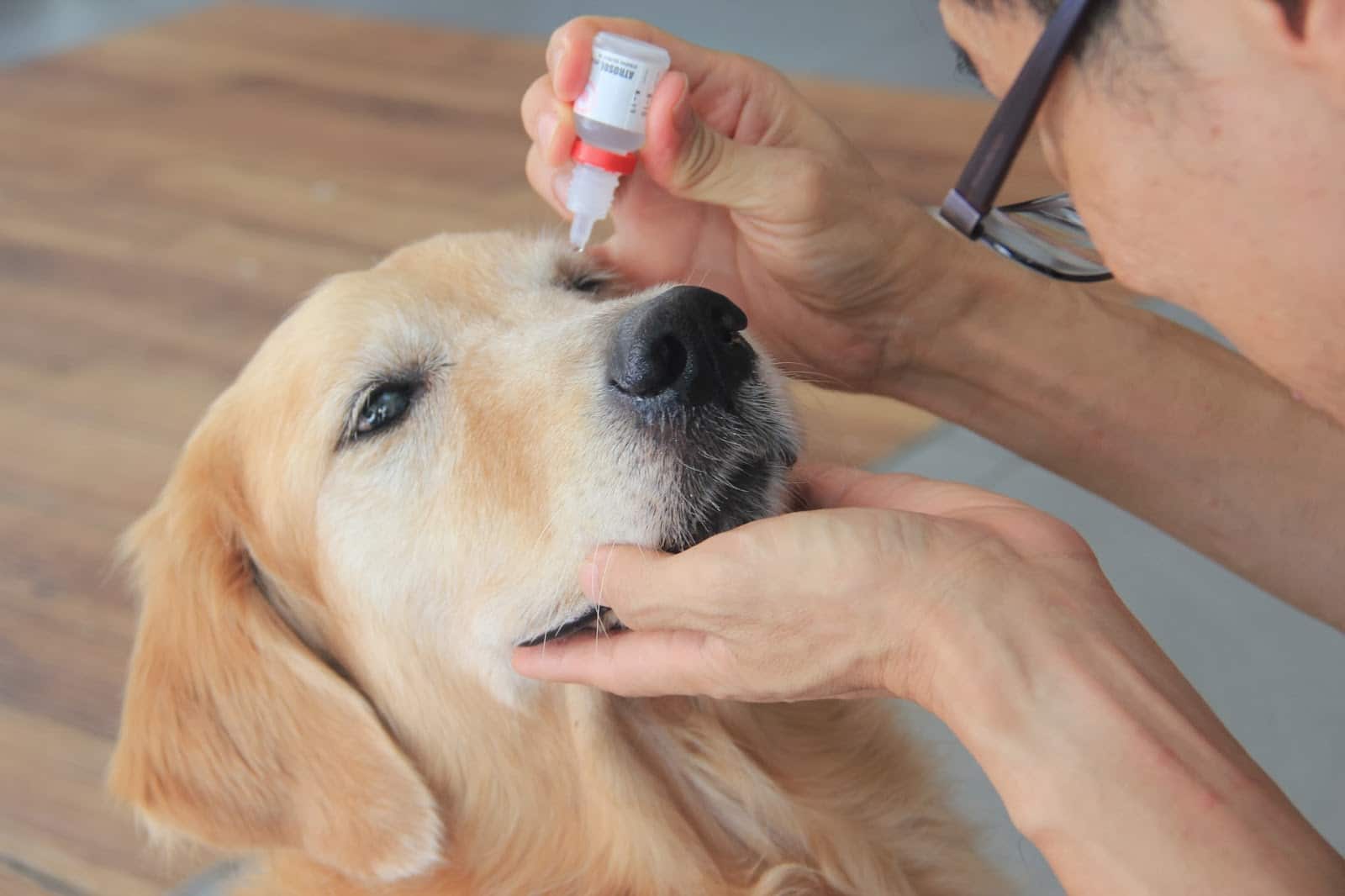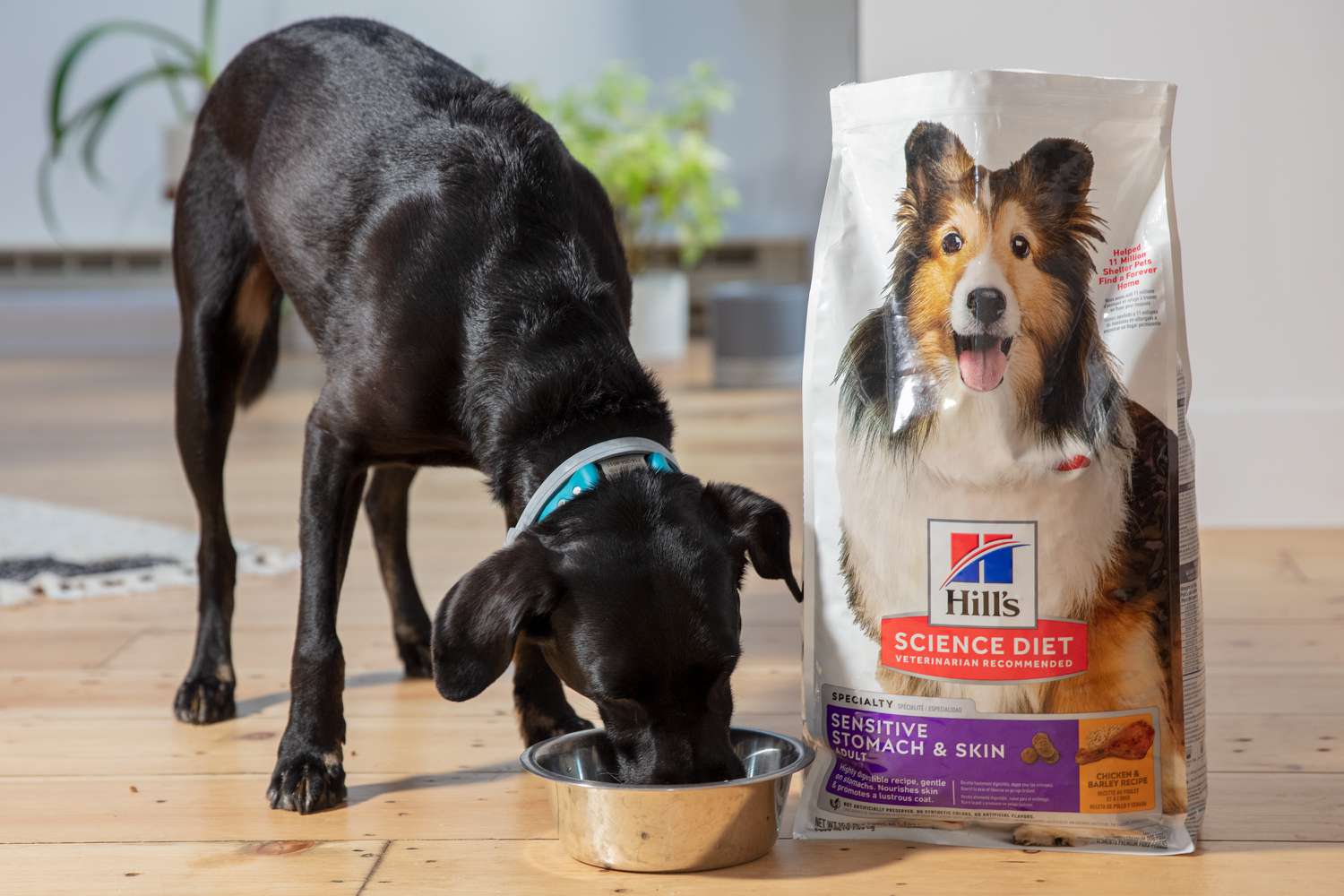Home>Health & Wellness>Common Health Issues>How To Make Food For A Diabetic Dog


Common Health Issues
How To Make Food For A Diabetic Dog
Published: January 31, 2024
Learn how to prepare food for a diabetic dog and manage common health issues with our expert tips and guidance. Keep your furry friend healthy and happy!
(Many of the links in this article redirect to a specific reviewed product. Your purchase of these products through affiliate links helps to generate commission for Pawsomeoldies.com, at no extra cost. Learn more)
Table of Contents
Introduction
Caring for a diabetic dog involves various aspects, and one crucial element is providing a suitable diet to manage their condition effectively. Just like humans, dogs can develop diabetes, and it's essential to understand the dietary requirements to support their well-being. A diabetic dog's diet plays a pivotal role in regulating blood sugar levels and ensuring overall health.
When a dog is diagnosed with diabetes, it can be overwhelming for pet owners to navigate the complexities of managing this condition. However, with the right knowledge and guidance, it's possible to create a supportive environment for your furry friend. This includes making informed choices about their diet, which can significantly impact their quality of life.
In this article, we will delve into the essential considerations for preparing food for a diabetic dog. From understanding their specific dietary needs to selecting the right ingredients and preparing diabetic-friendly meals, we will explore the key steps to support your canine companion's health. Additionally, we will discuss the importance of consulting with a veterinarian and monitoring and adjusting the diet as necessary.
By gaining insights into these aspects of caring for a diabetic dog, you can empower yourself to provide the best possible care for your beloved pet. With the right approach and a commitment to their well-being, you can make a meaningful difference in managing your diabetic dog's condition through their diet. Let's embark on this journey to discover the fundamental principles of crafting nutritious and balanced meals tailored to meet the unique needs of diabetic dogs.
Read more: How To Make Healthy Dog Food For Allergies
Understanding a Diabetic Dog's Dietary Needs
Understanding the dietary needs of a diabetic dog is crucial for effectively managing their condition and promoting their overall well-being. When a dog is diagnosed with diabetes, their dietary requirements undergo significant changes to help regulate blood sugar levels and maintain optimal health. The primary goal of a diabetic dog's diet is to control glucose levels and provide essential nutrients while managing their weight.
A key consideration in a diabetic dog's diet is the regulation of carbohydrates. Carbohydrates directly impact blood sugar levels, so it's essential to monitor and control their intake. Complex carbohydrates, such as those found in whole grains and vegetables, are preferable as they are digested more slowly, leading to a gradual release of glucose into the bloodstream. This helps prevent rapid spikes in blood sugar levels, promoting better glucose management.
In addition to carbohydrates, the protein and fat content of a diabetic dog's diet also play a crucial role. High-quality, lean protein sources are beneficial for maintaining muscle mass and supporting overall health. Similarly, healthy fats, such as those derived from fish or flaxseed, can contribute to a balanced diet while aiding in the regulation of insulin sensitivity.
Furthermore, dietary fiber is an important component to consider. Fiber helps regulate blood sugar levels and supports digestive health. By incorporating fiber-rich ingredients, such as vegetables and legumes, into a diabetic dog's meals, pet owners can contribute to better glycemic control and improved gastrointestinal function.
It's important to note that every diabetic dog is unique, and their dietary needs may vary based on factors such as age, weight, activity level, and overall health. Therefore, tailoring their diet to meet their specific requirements is essential for effectively managing their condition.
By gaining a comprehensive understanding of a diabetic dog's dietary needs, pet owners can make informed decisions when selecting and preparing meals for their furry companions. Consulting with a veterinarian to create a personalized dietary plan is highly recommended, as it can provide valuable insights and guidance tailored to the individual needs of the diabetic dog.
In the next sections, we will explore the importance of consulting with a veterinarian and the process of choosing the right ingredients to prepare diabetic-friendly meals for dogs. This comprehensive approach aims to empower pet owners with the knowledge and resources needed to support their diabetic dogs' health through a well-managed diet.
Consulting with a Veterinarian
Consulting with a veterinarian is an essential step in creating a tailored dietary plan for a diabetic dog. Veterinarians possess the expertise and experience to provide valuable guidance and recommendations based on the specific needs of the individual dog. When it comes to managing a diabetic dog's diet, seeking professional advice is crucial for ensuring that the dietary approach aligns with the dog's overall health and medical requirements.
During the consultation, the veterinarian will conduct a comprehensive assessment of the diabetic dog's health status, taking into account factors such as age, weight, activity level, and any existing medical conditions. This thorough evaluation enables the veterinarian to gain a holistic understanding of the dog's health and develop a customized dietary plan that addresses their unique needs.
Additionally, the veterinarian will offer insights into the ideal caloric intake for the diabetic dog, considering their energy requirements and weight management goals. By determining the appropriate caloric intake, pet owners can ensure that their diabetic dogs receive the necessary nutrition without compromising their overall health or exacerbating their condition.
Furthermore, the veterinarian can provide specific recommendations regarding the selection of suitable ingredients for preparing diabetic-friendly meals. This may include identifying high-quality protein sources, complex carbohydrates, and healthy fats that align with the dog's dietary requirements. Additionally, the veterinarian can advise on the incorporation of dietary fiber to support digestive health and blood sugar regulation.
Moreover, the veterinarian's guidance extends to the monitoring and adjustment of the diabetic dog's diet over time. As the dog's health and nutritional needs may evolve, regular consultations with the veterinarian enable pet owners to adapt the dietary plan accordingly, ensuring that it remains effective in managing the dog's diabetes.
In essence, consulting with a veterinarian is a foundational step in establishing a well-informed and tailored approach to crafting diabetic-friendly meals for dogs. The professional insights and recommendations provided by veterinarians empower pet owners to make informed decisions that positively impact their diabetic dogs' health and well-being. By collaborating with a veterinarian, pet owners can navigate the complexities of managing a diabetic dog's diet with confidence and expertise, ultimately contributing to the dog's improved quality of life.
Choosing the Right Ingredients
Selecting the right ingredients is a critical aspect of preparing diabetic-friendly meals for dogs. When crafting a diet tailored to meet the specific needs of a diabetic dog, the choice of ingredients significantly influences the nutritional content and impact on blood sugar regulation. By prioritizing high-quality, wholesome ingredients, pet owners can create balanced and nutritious meals that support their diabetic dogs' overall health and well-being.
Protein Sources
Incorporating lean and high-quality protein sources is essential for diabetic dogs. Opt for lean meats such as chicken, turkey, or lean cuts of beef to provide essential amino acids while managing fat content. Additionally, fish, such as salmon or trout, can serve as an excellent protein source, offering omega-3 fatty acids that contribute to overall health and insulin sensitivity.
Read more: What Company Makes Science Diet Dog Food
Complex Carbohydrates
When selecting carbohydrates, focus on complex, fiber-rich options that promote gradual glucose release. Whole grains like brown rice, quinoa, and barley are preferable choices, as they offer sustained energy and contribute to stable blood sugar levels. Furthermore, incorporating vegetables such as sweet potatoes, green beans, and leafy greens provides essential nutrients and dietary fiber, supporting digestive health and glycemic control.
Healthy Fats
Incorporating healthy fats into a diabetic dog's diet can aid in insulin sensitivity and provide essential fatty acids. Opt for sources of omega-3 fatty acids, such as fish oil or flaxseed oil, to support cardiovascular health and overall well-being. Additionally, including moderate amounts of healthy fats from sources like avocados and coconut oil can contribute to a balanced diet for diabetic dogs.
Dietary Fiber
Dietary fiber plays a crucial role in regulating blood sugar levels and supporting digestive function. Incorporating fiber-rich ingredients such as pumpkin, carrots, and green beans can aid in maintaining stable glucose levels and promoting gastrointestinal health. Moreover, the inclusion of legumes like lentils and chickpeas can provide additional fiber and essential nutrients, contributing to a well-rounded diabetic-friendly diet.
Nutrient-Dense Additions
Supplementing the diabetic dog's meals with nutrient-dense additions, such as blueberries, cranberries, and spinach, can offer antioxidants and essential vitamins. These additions not only enhance the nutritional profile of the meals but also contribute to overall health and well-being.
By carefully selecting and combining these ingredients, pet owners can create diabetic-friendly meals that cater to the specific dietary needs of their furry companions. The thoughtful incorporation of high-quality protein sources, complex carbohydrates, healthy fats, dietary fiber, and nutrient-dense additions forms the foundation of a well-balanced and nutritious diet for diabetic dogs. Additionally, consulting with a veterinarian can provide valuable insights into tailoring the ingredients to meet the individual needs of the diabetic dog, ensuring that their dietary plan aligns with their overall health and well-being.
Cooking and Preparing Diabetic-Friendly Meals
Cooking and preparing diabetic-friendly meals for dogs requires careful attention to detail and a commitment to meeting their specific dietary needs. By following a few essential guidelines, pet owners can create nutritious and balanced meals that support their diabetic dogs' overall health and well-being.
Portion Control and Meal Frequency
Maintaining proper portion control is crucial when preparing meals for diabetic dogs. By carefully measuring the food portions based on the veterinarian's recommendations, pet owners can ensure that their dogs receive the appropriate caloric intake to manage their weight and blood sugar levels. Additionally, dividing the daily food allowance into multiple small meals can help prevent rapid spikes in blood glucose, promoting better glycemic control throughout the day.
Cooking Methods
Opting for healthy cooking methods is essential when preparing diabetic-friendly meals. Boiling, steaming, or baking ingredients without added fats or oils can help preserve the nutritional integrity of the food while minimizing unnecessary calories. These cooking techniques retain the natural flavors and essential nutrients of the ingredients, contributing to the overall quality of the diabetic dog's meals.
Avoiding Added Sugars and Processed Ingredients
When cooking for diabetic dogs, it's important to avoid using added sugars and processed ingredients. Opt for natural sweeteners such as small amounts of honey or unsweetened applesauce if a recipe calls for a touch of sweetness. Additionally, selecting whole, unprocessed ingredients ensures that the meals are free from artificial additives and preservatives, promoting a wholesome and nutritious diet for diabetic dogs.
Incorporating Variety and Nutritional Balance
Introducing a variety of ingredients into the diabetic dog's meals promotes nutritional balance and dietary diversity. By rotating protein sources, incorporating different vegetables, and offering a mix of whole grains, pet owners can provide a wide range of essential nutrients while keeping the meals interesting for their furry companions. This approach contributes to a well-rounded diet that supports the dog's overall health and enjoyment of their meals.
Monitoring Response and Adjusting as Needed
After introducing diabetic-friendly meals, it's important for pet owners to monitor their dogs' response to the new diet. Regularly checking blood glucose levels and observing the dog's overall well-being can provide valuable insights into the effectiveness of the dietary plan. If necessary, adjustments can be made in consultation with the veterinarian to ensure that the meals continue to meet the dog's specific needs and support their overall health.
By following these guidelines and remaining attentive to the diabetic dog's individual requirements, pet owners can prepare diabetic-friendly meals that contribute to the effective management of their condition. The careful consideration of portion control, cooking methods, ingredient selection, and ongoing monitoring empowers pet owners to provide their diabetic dogs with meals that prioritize their health and well-being.
Monitoring and Adjusting the Diet
Monitoring the diabetic dog's response to the dietary plan is a crucial aspect of managing their condition effectively. After implementing the diabetic-friendly meals, pet owners should remain vigilant in observing their dog's overall well-being and tracking key indicators, such as blood glucose levels and weight management. This ongoing monitoring provides valuable insights into the dog's response to the diet and enables pet owners to make informed decisions regarding potential adjustments.
Regularly checking the dog's blood glucose levels is essential for evaluating the impact of the dietary plan on their diabetes management. By working closely with the veterinarian, pet owners can establish a schedule for monitoring blood glucose levels, allowing them to track any fluctuations and assess the effectiveness of the current dietary approach. Consistent and accurate monitoring provides valuable data that informs potential adjustments to the diet, ensuring that it remains aligned with the dog's specific needs.
In addition to blood glucose levels, observing the dog's overall well-being and behavior is integral to understanding how they are responding to the dietary plan. Factors such as energy levels, appetite, and any noticeable changes in behavior can offer valuable insights into the dog's health and the suitability of the current meals. By remaining attentive to these indicators, pet owners can identify any potential issues or areas for improvement, prompting them to consider adjustments to the diet in consultation with the veterinarian.
Furthermore, regular veterinary check-ups provide opportunities to assess the dog's overall health and discuss any necessary modifications to the dietary plan. Through open communication with the veterinarian, pet owners can gain valuable feedback and recommendations based on the dog's progress and any evolving health considerations. This collaborative approach ensures that the dietary plan remains dynamic and responsive to the dog's changing needs, ultimately contributing to their ongoing well-being.
Should the need for adjustments arise, pet owners can work closely with the veterinarian to modify the dietary plan in a targeted and informed manner. This may involve refining portion sizes, altering ingredient proportions, or introducing new elements to better support the dog's health and diabetes management. By leveraging the expertise of the veterinarian and remaining proactive in monitoring the dog's response, pet owners can adapt the dietary plan as needed, ensuring that it continues to effectively meet the dog's specific requirements.
In essence, the process of monitoring and adjusting the diabetic dog's diet is an ongoing and collaborative effort between pet owners and the veterinarian. By remaining attentive to key indicators, seeking regular veterinary guidance, and being proactive in making informed adjustments, pet owners can ensure that the dietary plan remains tailored to the dog's evolving needs and supports their overall health and well-being.
Conclusion
In conclusion, the process of preparing food for a diabetic dog encompasses a multifaceted approach that prioritizes the dog's specific dietary needs, health considerations, and overall well-being. By gaining a comprehensive understanding of a diabetic dog's dietary requirements and consulting with a veterinarian, pet owners can lay the foundation for crafting diabetic-friendly meals that effectively support the dog's diabetes management.
The significance of choosing the right ingredients cannot be overstated, as it forms the cornerstone of creating balanced and nutritious meals tailored to meet the unique needs of diabetic dogs. From high-quality protein sources and complex carbohydrates to healthy fats and dietary fiber, the thoughtful selection and combination of these ingredients contribute to a well-rounded diet that promotes stable blood sugar levels and supports the dog's overall health.
Furthermore, the process of cooking and preparing diabetic-friendly meals requires attention to detail, portion control, and ongoing monitoring to ensure that the meals align with the dog's specific dietary requirements. By following guidelines for healthy cooking methods, ingredient selection, and meal frequency, pet owners can create meals that cater to the dog's nutritional needs while promoting better glycemic control and overall well-being.
The journey of monitoring and adjusting the diabetic dog's diet is an ongoing commitment that empowers pet owners to remain responsive to the dog's evolving health considerations. Through regular monitoring of blood glucose levels, observing the dog's overall well-being, and seeking veterinary guidance, pet owners can adapt the dietary plan as needed, ensuring that it continues to effectively support the dog's diabetes management and overall health.
In essence, the process of making food for a diabetic dog is a holistic endeavor that requires a blend of expertise, compassion, and a commitment to the dog's well-being. By integrating the insights and recommendations provided in this article, pet owners can navigate the complexities of managing a diabetic dog's diet with confidence and expertise, ultimately contributing to the dog's improved quality of life and long-term health.
Through a collaborative approach with veterinarians and a dedication to crafting diabetic-friendly meals that prioritize the dog's specific needs, pet owners can make a meaningful difference in supporting their diabetic dogs on their journey to optimal health and well-being.












